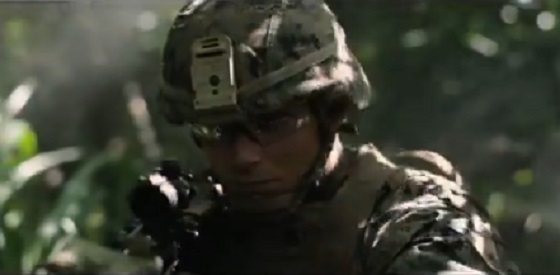armed forces
How Much Dollar Value Does Our Military Deliver?

To my great surprise I recently noticed that, despite being deeply engaged in wars against at least four determined enemies, Israel doesn’t spend all that much more on their military than Canada does on its forces. What might that tell us about government efficiency?
There’s fairly universal agreement that Canada doesn’t spend enough on its military. But before we can even ask how much we should be spending, we should understand how much we’re already spending. And figuring that out isn’t nearly as easy as I’d expected.
According to the 2025–26 Expenditures by Purpose data released by the Treasury Board Secretariat, the Department of National Defence (DND) was allocated $35.7 billion (CAN). However, the New York Times recently reported that Primer Minister Carney’s $9.3 billion increase would bring the total defence-related spending to $62.7 billion – which suggests that, prior to the increase, we were set to spend $53.4 billion (CAN).
So I’ll work with both of those figures: $35.7 billion ($26 billion USD) and the pre-announcement $53.4 billion ($39 billion USD). By contrast, Israel currently spends around $37 billion (USD) on the Israel Defense Forces (IDF) which is in the neighborhood of 18 percent of their total budget.¹ The IDF is (literally) getting a much bigger bang for their buck.²
I’m going to compare the military inventories of both countries to get a sense of what a dollar of government spending can get you. I understand that this isn’t an apples-to-apples comparison and there are many complicating factors here. But I think the exercise could lead us to some useful insights. First off, here’s a very rough estimate of existing inventories:
I’m sure there are plenty of caveats we could apply to those numbers, including how much of that equipment is actually fit for service on any given day. But they’ll have to do.
In addition, there are currently 68,000 regular troops in the Canadian Armed Forces (CAF) along with 22,500 reserves, while the IDF employs 169,500 regular troops and 465,000 reserves. They also cost money.
Based on some very rough estimates,³ I’d assess the value of IDF assets at around 2.6 times the value of comparable CAF assets. That means that the IDF – using their procurement systems – would need to spend just $14.4 billion (USD) to purchase the equivalent of the current set of CAF assets.
Now compare that with our actual (pre-increase) expenditures of either $26 billion USD or $39 billion USD and it seems that we’re overspending by either 80 percent or 270 percent.
I think we’d be wise to wonder why that is.
For full context, Israel receives around $3.8 billion (USD) in military aid annually from the U.S.
Speaking of which, for simplicity, I completely left the ongoing costs of ordinance out of my calculations.
If you’re really interested, you can see my calculations here.
Subscribe to The Audit.
For the full experience, upgrade your subscription.
armed forces
Trump rebuilds the ranks: Army crushes 2025 recruitment goal early

 MxM News
MxM News
Quick Hit:
The Army has already exceeded its 2025 recruiting goal of 61,000 troops—four months ahead of schedule—as the Trump administration’s rollback of woke policies draws thousands back to military service.
Key Details:
-
The Army’s 2025 recruiting goal was 61,000—higher than last year’s 55,000—and has already been met with more than four months remaining in the fiscal year. Officials report a 56% increase in average daily enlistment rates over last year.
-
Army Secretary Daniel Driscoll thanked Trump and Hegseth, saying their “decisive leadership” and “putting soldiers first” contributed to the record-breaking numbers.
-
Hegseth has aggressively pushed to eliminate leftist cultural initiatives in the military, including moves to administratively separate transgender troops and rename a Navy ship previously dedicated to gay rights icon Harvey Milk.
Diving Deeper:
The U.S. Army has reached a major milestone ahead of schedule—signing up 61,000 new recruits in fiscal year 2025, effectively smashing its annual goal months before the September 30th deadline. The achievement marks a dramatic shift after years of underperformance and is being touted as a vindication of the Trump administration’s efforts to reorient the military away from progressive social engineering and back toward warfighting readiness.
In a Wall Street Journal op-ed Tuesday, Army Secretary Daniel Driscoll praised the recruiting corps, attributing their success to both boots-on-the-ground determination and high-level support. “I’m incredibly proud of our U.S. Army recruiters and drill sergeants,” he said. “Their colossal efforts and dedication to duty helped the U.S. Army accomplish our FY25 annual recruiting goal a full four months ahead of schedule.” Driscoll continued, “I want to thank the commander in chief, President Trump, and Secretary of Defense Hegseth for their decisive leadership and support.”
The Army’s target of 61,000 recruits was a notable jump from last year’s 55,000 goal. Officials say that as of this month, daily enlistment figures are tracking 56% higher than the previous year.
Driving the increase, many believe, is the sweeping overhaul of military culture underway under Defense Secretary Pete Hegseth. Hegseth has made no secret of his intent to steer the armed forces away from what he calls “woke and weak” policies. That includes the Pentagon’s past focus on gender identity politics, climate initiatives, and mandatory diversity training—priorities Hegseth sees as incompatible with combat readiness.
“We are leaving wokeness and weakness behind,” Hegseth declared during remarks last month at the Special Operations Forces Week convention in Tampa. “No more pronouns, no more climate change obsession, no more emergency vaccine mandates. No more dudes in dresses. We’re done with that s***.”
Hegseth emphasized a military rooted in “lethality, meritocracy, accountability, standards and readiness,” and added pointedly, “Our combat formations don’t need to look like Harvard University—they need to look like killers.”
In line with that shift, Hegseth also this week ordered the Navy to remove Harvey Milk’s name from a replenishment ship. The vessel had been named in honor of Milk, a gay rights activist and former Navy officer who was elected to the San Francisco Board of Supervisors in 1977 before being assassinated a year later.
The directive aligns with what Hegseth calls “warrior culture” and the broader mission to reflect Trump administration priorities across the military’s assets and institutions. The Pentagon has yet to confirm a new name for the USNS Harvey Milk, and a spokesperson said reviews are ongoing.
The Army is set to mark its 250th anniversary on June 14th—a symbolic moment, officials say, as it reclaims its footing and begins to rebuild the force from a position of strength.
armed forces
New Trump-Pentagon ad resets mission: end wokeness, win wars

Quick Hit:
The Pentagon released a dramatic new ad Sunday featuring President Trump and Defense Secretary Pete Hegseth, highlighting the end of woke policies in the military and a renewed focus on strength, discipline, and warfighting.
Key Details:
-
The ad, titled Peace through Strength, features intense training and combat scenes, underscored by speeches from Trump and Hegseth.
-
“No more distraction, no more electric tanks, no more gender confusion, no more climate change worship,” Hegseth proclaims, signaling a sharp pivot from recent Pentagon policies.
-
Trump promises that under his leadership, U.S. military success will be defined “not only by the battles we win, but also by the wars we end,” calling for peace built on American strength.
NEW U.S. MILITARY AD HITS HARD🇺🇸
"We are laser focused on our mission of warfighting… Our friends will respect us, our enemies will fear us, and the whole world will admire the unrivaled greatness of the United States Military" pic.twitter.com/jdm3MikswO
— The White House (@WhiteHouse) May 27, 2025
Diving Deeper:
The Pentagon launched a forceful new recruitment and branding campaign over Memorial Day weekend, spotlighting the military’s return to fundamentals under the leadership of Defense Secretary Pete Hegseth and President Donald Trump. The minute-long ad, titled Peace through Strength, premiered Sunday at the Coca-Cola 600 NASCAR event and was simultaneously posted to the Department of Defense’s social media accounts.
Using fast-paced training footage and dramatic music, the ad showcases troops in battlefield simulations and highlights a no-nonsense message from the Trump administration. Hegseth opens with a clear declaration: “No more distraction, no more electric tanks, no more gender confusion, no more climate change worship. We are laser-focused on our mission of warfighting.”
The video includes remarks from Trump affirming his vision for a military built on discipline and deterrence. “Through our power and might, we will lead the world to peace,” he says. “Our friends will respect us. Our enemies will fear us. And the whole world will admire the unrivaled greatness of the United States military.”
The ad was produced using previously recorded training footage, according to a Pentagon spokesperson who spoke to The New York Post.
Hegseth also makes a direct appeal to America’s youth, praising “incredible” young men and women “giving up the best years of their lives” to defend the country. He closes the ad with a quote that underscores the values behind the mission: “We don’t fight because we hate what’s in front of us. We fight because we love what’s behind us.”
The backdrop to the ad is a recruiting crisis that had plagued the military under Biden. In fiscal year 2022, the U.S. Army fell short by roughly 25% of its enlistment target. Similar gaps were recorded across other branches in 2023, with both the Navy and Air Force reporting thousands fewer recruits than needed.
Reversing that trend has been a key objective for Hegseth. He has made it clear that returning to a warrior culture—and scrapping the distractions of social experimentation—is central to solving the problem.
The ad’s release comes just days after the House passed the One Big Beautiful Bill Act, which adds $150 billion in new military funding. That package includes investments in shipbuilding, defense modernization, and Trump’s space-based Golden Dome missile defense initiative.
Together, the new ad and the legislation serve as a one-two punch from the Trump administration, signaling a full-spectrum push to rebuild, rearm, and reinspire the U.S. Armed Forces.
-

 Alberta4 hours ago
Alberta4 hours agoCalls for a new pipeline to the coast are only getting louder
-

 Alberta1 day ago
Alberta1 day agoAlberta announces citizens will have to pay for their COVID shots
-

 Alberta1 day ago
Alberta1 day agoAlberta is investing up to $50 million into new technologies to help reduce oil sands mine water
-

 Alberta5 hours ago
Alberta5 hours agoAlberta pro-life group says health officials admit many babies are left to die after failed abortions
-

 Bruce Dowbiggin1 day ago
Bruce Dowbiggin1 day agoWOKE NBA Stars Seems Natural For CDN Advertisers. Why Won’t They Bite?
-

 Aristotle Foundation1 day ago
Aristotle Foundation1 day agoThe Canadian Medical Association’s inexplicable stance on pediatric gender medicine
-

 Business1 day ago
Business1 day agoThe CBC is a government-funded giant no one watches
-

 Business3 hours ago
Business3 hours agoCanada’s economic pain could be a blessing in disguise





